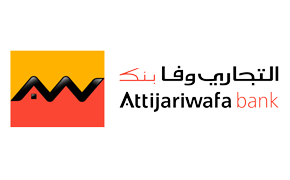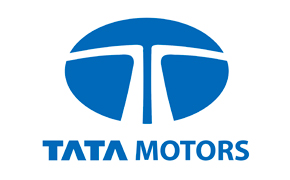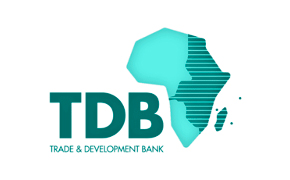Enterprise Blockchain technology has garnered significant attention over the past few years.
As companies across industries seek to adopt this technology for various applications ranging from supply chain efficiencies, Sustainability, Logistics, Trade to financing and data security, the failure rate of these initiatives was alarmingly high.
A multi party technology deployment cannot take an approach of a single party execution framework.
Most of this initial hard work over two decades has now given us clarity on what’s critical for a shared framework to work.
It’s time we understand that some of the earlier ones had legs and those ideas were fundamentals for our wisdom and approach today; how can we mitigate against the usual risks and be successful in our deployment?
According to a recent article on Cointelegraph, enterprise blockchain projects have a failure rate of 90%, with a typical project lifespan of just 1.22 years.
Understanding the common pitfalls can provide invaluable insights into planning and executing a successful enterprise blockchain deployment.
This blog post will delve into five key reasons why enterprise blockchain projects often fail and how we can mitigate these risks.
5 Reasons Why Enterprise Blockchain Deployments Failed
1. Lack of Clear Objectives and Use-Case
It’s not uncommon for enterprises to jump on the blockchain bandwagon without having a clearly defined problem they’re trying to solve.
When a project is driven solely by the hype surrounding the technology, it’s likely to devolve into a directionless endeavor, eventually leading to its failure.
Before embarking on a blockchain project, it’s essential to identify what specific issue the technology will address.
Asking key questions like “What business processes can blockchain improve?” or “How does blockchain offer a better solution than existing technologies?” can offer clarity and direction.
Establishing a BMO or a benefit management office is a clear path for success, as we define the benefits of all parties upfront.
This has worked well in 95% of the successful deployments.
2. Poor Understanding of Blockchain Technology
Many enterprises mistakenly view blockchain as a one-size-fits-all solution.
There is no clear understanding of what should be on-chain and what’s off chain.
This misunderstanding often leads to poor application of the technology, or in the case of the scrapped Australian Securities Exchange (ASX) blockchain project, to uncertainty over how requirements interact with the application and underlying ledger.
Understanding the limitations and advantages of blockchain is crucial for its successful application.
Key personnel should be educated on what blockchain can and cannot do to ensure that the technology is applied effectively.
An upfront to day training is what can be suggested as a key success factor in every enterprise initiative we embark on.
3. Inadequate Stakeholder Buy-in
For a blockchain project to succeed, it needs to be embraced by all stakeholders involved—this includes management, IT departments, business units, and even external partners.
Failure to achieve this buy-in — as was the case in the scrapped Maersk Tradelens platform — often results in lack of resources and internal support.
Engaging stakeholders early in the process is key to the project’s success. Workshops, seminars, and proof-of-concept demonstrations can go a long way in getting everyone on board.
Defining a commercial path before the business partners are completely within the process has resulted in the failure of several consortium networks.
It’s best to succeed within a closed loop first, initiated by a central and large supply-chain and then spreading the wings far and wide; it’s a better strategy. Hence, it’s an approach to deployment which should be sorted well ahead of its deployment.
4. Regulatory and Compliance Issues
Blockchain’s decentralized nature often conflicts with existing regulations like GDPR and various data sovereignty laws.
These conflicts can grind projects to a halt if not considered in the planning stages.
In an article for Traders Magazine, R3 Chief Economist Alisa DiCaprio writes that “[Failed blockchain projects] Terra and FTX did not violate any regulations but lacked the risk management controls and consumer safeguards associated with traditional finance.
This created uncertainty, which made it impossible for regulators to intervene once the problem was realized.”
It’s important to consult with legal experts who understand both blockchain and industry-specific regulations. This helps in devising a roadmap that remains compliant with existing laws.
5. Insufficient Budget and Resources
While blockchain can potentially reduce operational costs, the initial implementation can be quite resource-intensive, as the failed We.trade project proved. A lack of adequate budget and resources—both human and computational—can be a significant roadblock.
Proper budgeting should include not only the development costs but also the ongoing costs for maintenance, upgrades, and scalability. A realistic budget paired with a well-defined project scope can help in aligning the necessary resources effectively.
A fundamental technology transition will need adequate budgets allocated and companies are progressing in that direction today. A fundamental technology deployment cannot be seen as a POC or pilot where the earlier projects have focused on for a decade.
This has now changed and we are seeing huge deployments coming up in most parts of the global 1000; This is with thoughts on adequate budgets and not driven with a scope to prove.
It is with a scope to deploy into production and extremely positive for the might at which it can digitalise.
Enterprise blockchain is a fundamental shift from the world of integration and EDI, where we bring together integrated supply chains, its real time impacts, sustainability, financing and several of our shared processes where we work together in large ecosystems — connected, collaborated and authenticated.
Client server, Mobility, Cloud, CBDC, Web3 are all fundamental shifts in how we collaborate with efficiency, speed, real time and thus build huge value for our businesses.
These are transformational in nature.
Enterprise blockchain is a fundamental shift for shared data and has taken the space for building authenticity, collaboration and digitalization across enterprises.
We are witnessing almost all of Global 1000 initiating and building these as a part of the overall digital strategy for the future.
Talk to Us About Your Multi-party Process Inefficiencies
Blockchain offers transformative potential for enterprises, but it comes with its own set of challenges.
Whether it’s the lack of a clear objective, misunderstandings about the technology, inadequate stakeholder buy-in, regulatory challenges, scalability issues, or insufficient budget and resources, recognizing and planning for these pitfalls can significantly improve your project’s chances of success.
Have you encountered these challenges in your own enterprise blockchain projects?
If you need further guidance, feel free to reach out to schedule a discussion about your project’s unique needs and challenges.

















